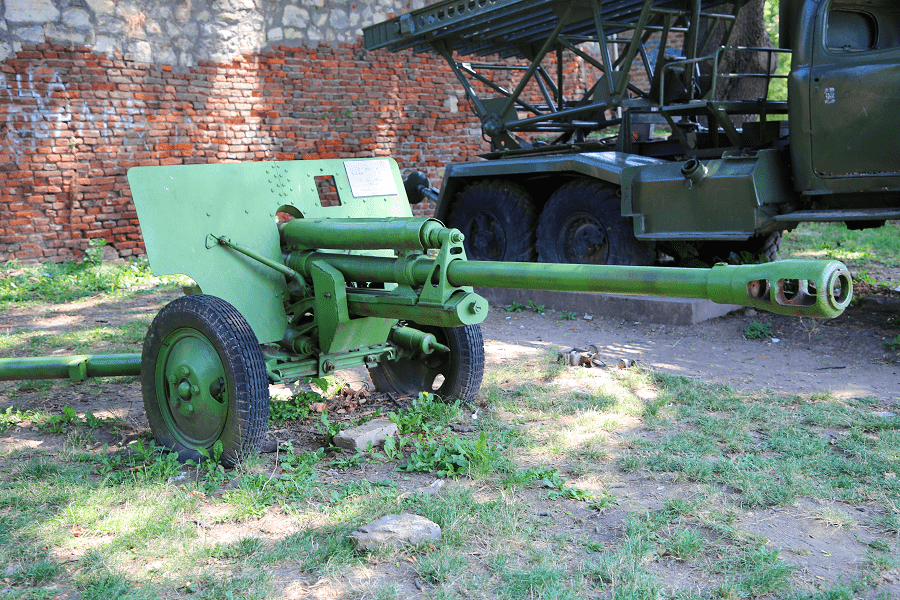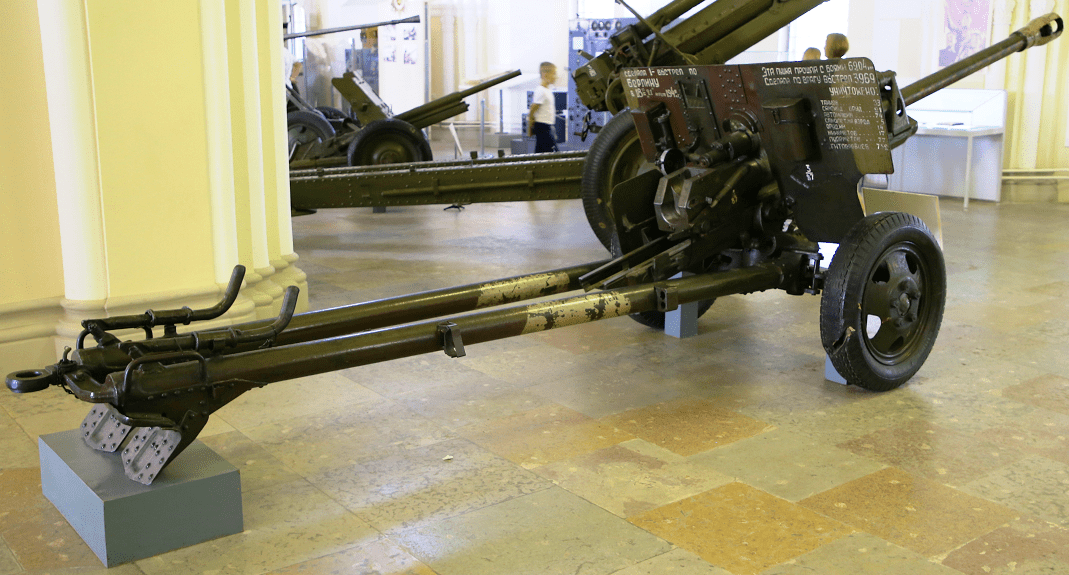76 mm divisional gun M1942 (ZiS-3): Soviet field gun
Artillery Factory №92 began designing the ZiS-3 at the end of 1940. The ZiS-3 combined the light carriage from the 57 mm ZiS-2 anti-tank gun and the powerful 76.2 mm barrel from the F-22USV, the previous divisional field gun.
The addition of a muzzle brake reduced recoil and prevented damage to the light carriage upon firing. Producing a ZiS-3 cost only a third of the time and two-thirds of the money of a F-22USV by making greater use of casting, stamping and welding.
Vasiliy Grabin, the chief designer of Soviet medium caliber guns, initiated the gun’s development without state approval, and the prototype was hidden from the state.
Marshal Grigory Kulik, commander of Soviet artillery, had ordered a halt to the production of light 45 mm anti-tank guns and 76.2 mm divisional field guns in the belief that they were inadequate; the Soviets overestimated the armour protection of the latest German heavy tanks from propaganda about the Neubaufahrzeug multi-turreted prototype tank.
The beginning of the Great Patriotic War revealed that the pre-war 76 mm guns overmatched German armour; in some cases even 12.7 mm DShK machine guns were adequate.

This gun covered 6204 km with battles. Fired 3969 shots at the enemy. It destroyed: 33 tanks, 21 self-propelled guns, 74 armored vehicles, 5 aircrafts, 14 guns, 17 mortars, 77 machine guns and 752 Nazis.
Most of the 76 mm guns were lost early in the war; some captured examples armed German Panzerjäger self-propelled guns. Marshal Kulik ordered the F-22USV back into production. At Artillery Factory №92, Grabin put the ZiS-3 into mass production in December 1941.
Country: USSR
Year: 1942
Production: 105,000
Rate of fire: 25 rpm
Muzzle velocity: 700 m/s
Fire range: 13 km
Weight: 2150 kg
Military Museum (Belgrade) and artillery museum (Petrograd district, St. Petersburg)
















